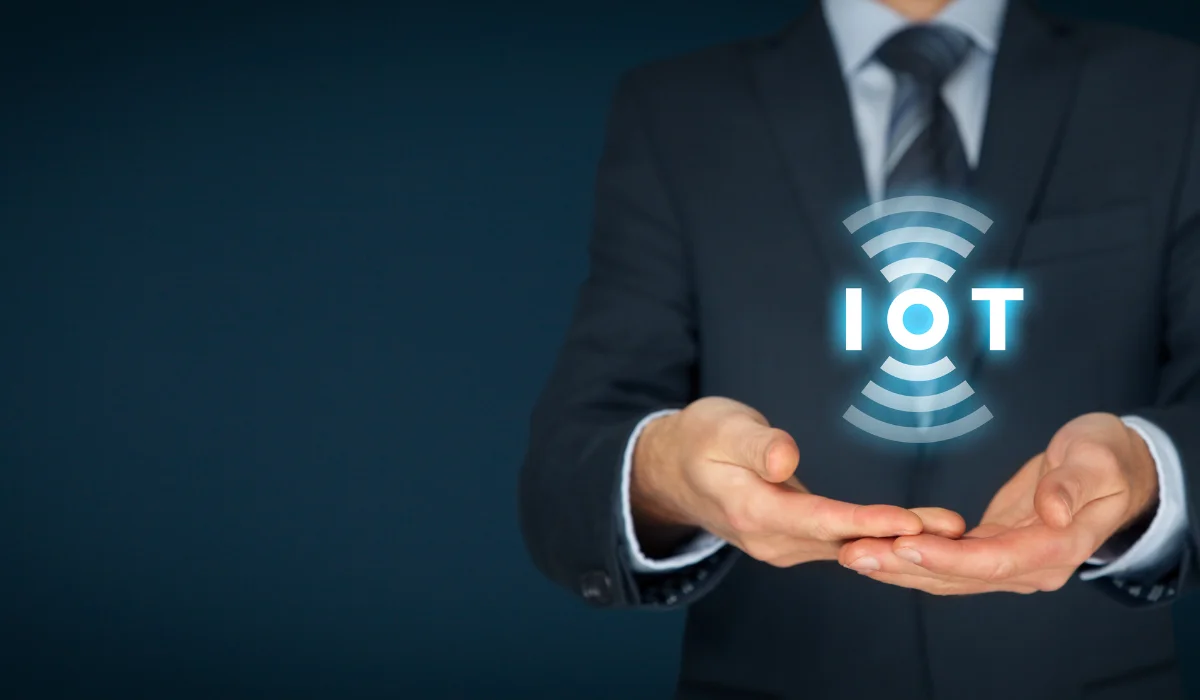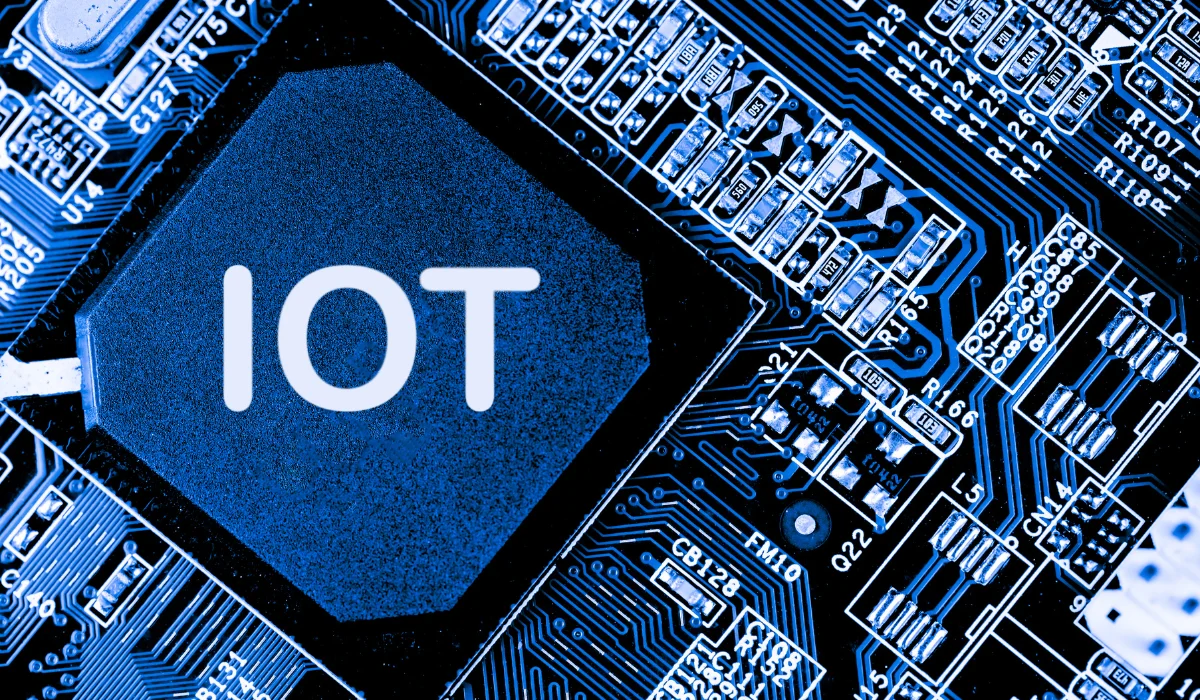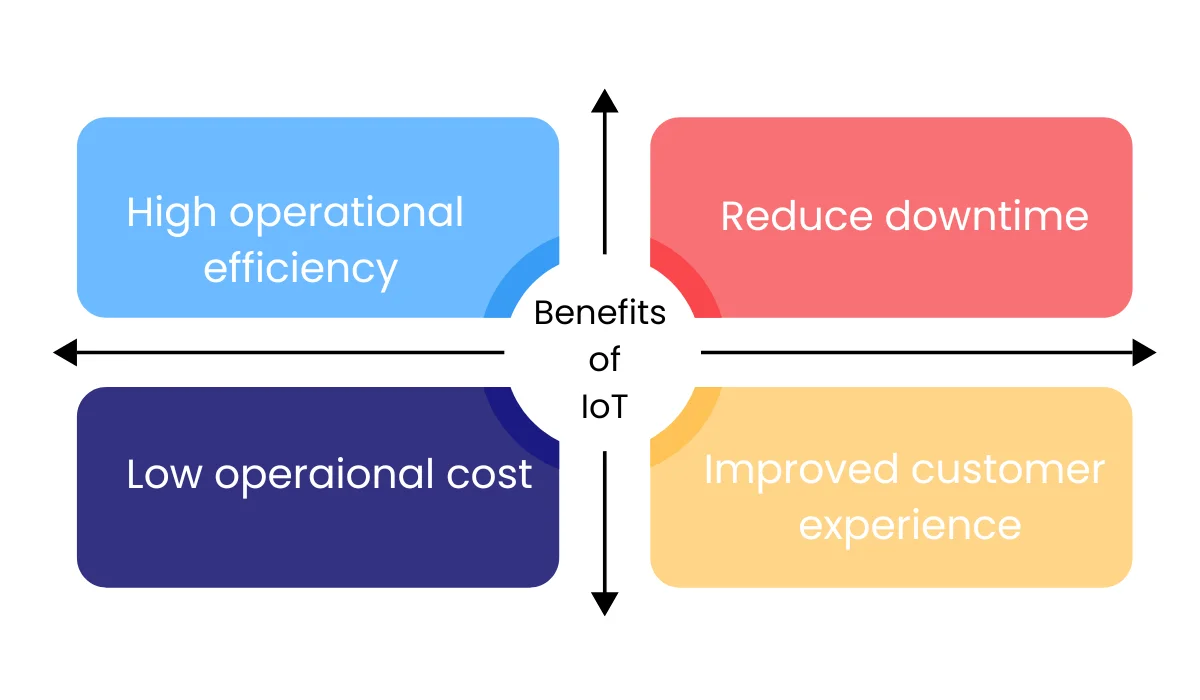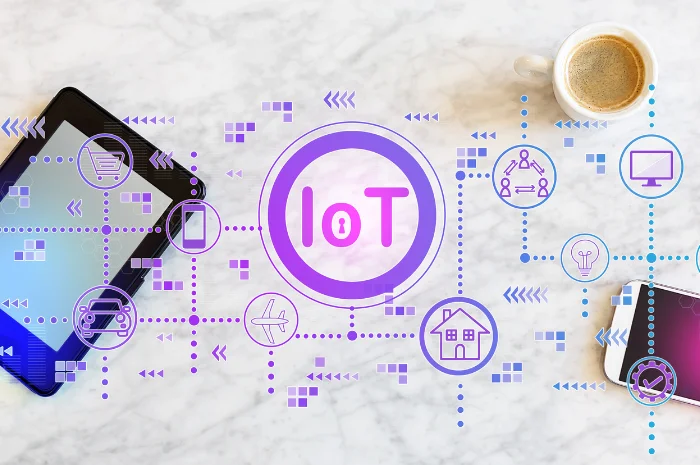Building IoT software is not like building a website or a mobile app. You’re dealing with physical devices, sensors, data pipelines, security risks, networks that may drop, and platforms that need to scale. One small issue in any layer can disrupt the entire system.
This is why understanding IoT software development matters. Whether you’re planning a new IoT product or upgrading an existing system, knowing the process helps you avoid mistakes, choose the right tools, and build something that works reliably in the real world.
In this blog, we’ll walk through:
- Why businesses invest in IoT
- What IoT software actually is
- How it works end to end
- The steps involved in building it
- Hardware, platforms, and programming languages to consider
The good news is that building reliable IoT applications or software becomes much easier when you design with the right principles. This article walks you through those principles.
Why Should You Build IoT Software?

If you’re exploring an IoT software development company, you’re probably trying to solve a very real problem. Maybe you want better visibility into your operations, maybe you’re tired of manual work slowing things down, or maybe you want to use data more intelligently. IoT software helps you do all of that by connecting your physical world to your digital systems.
Let’s walk through why it’s worth investing in.
1. It helps you modernize without disrupting everything
Digital transformation sounds big and complicated, but IoT makes it practical. When your devices and machines start sharing real-time data, you don’t have to guess what’s happening anymore, you can see it.
Imagine:
- Machines telling you they need maintenance instead of suddenly breaking.
- Inventory updating automatically instead of relying on manual counts.
- Energy systems adjust themselves based on actual usage.
You move toward a smarter, more connected operation without asking your teams to change their entire workflow overnight.
2. It gives you real-time insights instead of delayed reports
Most businesses still operate on yesterday’s data. By the time you spot an issue, it’s already affected customers, operations, or costs.
IoT applications change that completely.
- With live data coming from sensors and devices, you can:
- Catch abnormal machine behavior early
- Track your fleet minute-by-minute
- Spot product issues before customers do
- React instantly to changes on the shop floor
Real-time visibility leads to better decisions and fewer surprises.
3. It lets you automate tasks you shouldn’t be doing manually
A lot of work in businesses is repetitive: checking temperatures, logging readings, inspecting equipment, verifying stock levels, adjusting settings… and the list goes on.
IoT lets you automate these tasks.
For example:
- If the temperature goes up, a cooling system can turn on automatically.
- If water levels drop, pumps can activate.
- If a machine crosses a threshold, your team gets an instant alert.
This means fewer errors, fewer delays, and smoother operations overall.
4. It gives you a real competitive edge
When your systems are connected and running with real-time intelligence, you naturally perform better than companies still relying on manual processes.
Over time, you’ll notice:
- Lower operational costs
- Less downtime
- Faster delivery
- Happier customers
- Better data for strategy and planning
IoT doesn’t just make your business smarter, it makes it harder for competitors to catch up.
What is IoT Software

IoT software is the technology that helps connected devices collect data, communicate with each other, and take actions automatically. It serves as the bridge between the physical world and your digital systems.
A complete IoT solution usually includes four main components:
1. Firmware (Device-Level Software)
Firmware is the code running inside your device or sensor.
Think of it as a “lightweight operating system” for your IoT hardware. It handles essential tasks like:
- Reading data from sensors: For example, the firmware reads temperature, vibration, or location values.
- Managing power and memory: Many IoT devices run on batteries, so firmware decides when to sleep, wake, or send data to save energy.
- Sending data to the cloud: It packages sensor readings into small messages that travel over WiFi, Bluetooth, LoRaWAN, or cellular networks.
- Receiving commands: If your cloud platform tells the device to restart or adjust settings, the firmware executes those commands.
In short, firmware keeps the device alive, aware, and connected. Without strong firmware, even the best cloud systems won’t help.
2. Cloud Platforms (The Central Brain of IoT)
Once a device sends data, it needs a place to go, that’s where cloud platforms come in. Platforms like AWS IoT, Azure IoT Hub, and Google Cloud IoT handle the heavy processing work. They are responsible for:
- Collecting incoming data: They receive thousands of messages per second from devices.
- Storing that data securely: Data might be saved in time-series databases, data lakes, or cold storage depending on how frequently you need it.
- Processing and analyzing data: The cloud can run rules, workflows, or ML models to detect patterns or trigger alerts.
- Routing data to other systems: ERP systems, dashboards, mobile apps, or external APIs.
Think of the cloud as the place where all device data is cleaned, organized, stored, and turned into something useful.
3. Device Management (Scaling and Control Layer)
As your IoT network grows, you can’t physically check or update each device. You need a remote control center, and that’s what device management provides.
Device management tools let you:
- Update firmware over the air (OTA): Add new features or security fixes without visiting the device.
- Monitor device health: Battery status, connectivity strength, uptime, and error logs.
- Secure the device fleet: Manage certificates, authentication, and encryption.
- Group and control devices: For example, updating 2,000 sensors in one go.
Device management becomes critical once your deployment crosses even a few dozen devices.
4. Dashboards and Applications (Where Humans Interact)
Data is only useful when people can understand it. Dashboards turn raw IoT data into visuals, alerts, and insights. Dashboards allow you to:
- Monitor live data: See temperature, energy usage, machine status, or GPS coordinates.
- Get alerts: When something crosses a threshold like overheating or low pressure.
- Control devices remotely: Switch modes, reboot hardware, change settings.
- Analyze historical trends: Spot patterns, inefficiencies, or failure indicators.
This is the part your operations team, customers, or managers interact with daily.
Also Read: AI vs IoT: Key Differences You Must Know
Benefits of Developing IoT Applications

If you’re considering IoT application development, the real question is simple: What do you actually gain from it? IoT isn’t just about connecting devices; it’s about improving how your organization works day to day. When implemented well, IoT software helps businesses operate more efficiently, reduce waste, and make smarter decisions backed by real-time data.
Let’s break down the main benefits of IoT in a way that connects directly to real-world use cases.
1. Better Operational Efficiency
IoT gives you visibility into what’s happening across your operations, from machine performance to asset usage to environmental conditions. That insight helps teams spot bottlenecks, remove manual steps, and run more streamlined processes.
2. Predictive Maintenance That Reduces Downtime
Unexpected equipment failures can cause enormous disruption. IoT helps you move from reactive repairs to predictive maintenance.
Sensors continuously track things like temperature, vibration, pressure, and noise levels. When the system detects unusual patterns, it alerts your team before a breakdown happens.
This means you can:
- Schedule maintenance before issues escalate
- Extend the life of your equipment
- Reduce costly periods of downtime
- Prevent safety incidents
Predictive maintenance is one of the most valuable IoT use cases for manufacturing, energy, utilities, and transportation.
3. Improved Customer Experience
IoT-connected products and services help you understand how customers use your offerings in real-world conditions. This feedback loop lets you upgrade features, provide proactive support, and personalize user experiences.
Examples include:
- Smart appliances that notify users when parts need replacement
- Wearables offering personalized insights
- Connected vehicles that send driver-specific recommendations
Developing IoT software gives you a direct line to customer behavior, helping you create stickier, more valuable products.
4. Lower Operational and Service Costs
When businesses automate tasks, reduce manual checks, and avoid equipment failures, costs naturally drop.
IoT helps save money by:
- Minimizing technician visits through remote monitoring
- Reducing energy consumption with smart controls
- Avoiding unnecessary repairs
- Cutting labor effort for routine tasks
Even simple IoT solutions like automating temperature control or optimizing route planning can generate measurable cost savings.
5. Easier Scalability for Growing Operations
Traditional systems struggle to scale because they rely heavily on manual updates and local infrastructure. IoT software, on the other hand, is built to handle growth.
With the right platform, you can:
- Add devices without major infrastructure changes
- Manage thousands of sensors from a single dashboard
- Update firmware remotely
- Expand into new locations without local IT support
Scaling an IoT system is often more about configuration than physical expansion, which makes it much faster.
In short, IoT software delivers both immediate wins (like automation) and long-term gains (like data-driven decision-making and stronger customer relationships). These benefits compound over time, making IoT one of the most impactful technologies for modern businesses.
What are the Core Components of IoT Systems

A truly connected experience needs a full software stack that links the physical world to the cloud. You must understand these core layers for successful IoT software development.
-
Devices and Hardware
This is the physical layer, the tiny sensors that gather data (like temperature or location) and the actuators that carry out commands (like turning on a light). Embedded firmware is the critical code running here, responsible for preparing data and sending it securely.
-
Connectivity and Protocols
Data has to move reliably. Because many IoT devices are resource-limited, specialized protocols are used:
- MQTT (Message Queuing Telemetry Transport): This is lightweight and publish-subscribe, making it perfect for low-bandwidth networks. It’s the standard for most large deployments.
- CoAP (Constrained Application Protocol): A specialized web protocol designed for small devices and limited networks.
- LPWAN (Low-Power Wide-Area Networks): Technologies like LoRaWAN built for long-distance coverage using very little power.
-
Web of Things (WoT)
To fix fragmentation, the W3C Web of Things (WoT) is essential. WoT provides an architectural standard for the application layer. Its cornerstone is the Thing Description (TD), a standardized data model that describes what an IoT device does, what data it uses, and how to talk to it. This means systems can automatically discover and securely use any device, making integration much simpler.
-
IoT Platforms / Middleware
These platforms act as the central brain, tying everything together. They handle:
Device Management: Registering, authenticating, and tracking device health.
Message Brokers: Managing the huge flow of data, usually via MQTT.
Data Ingestion and Processing: Securely taking in, checking, and sending device data to the right place.
APIs: Offering ways for outside apps (mobile apps, business systems) to access device data and controls.
-
User Interfaces (UIs)
This is what the user sees, mobile apps, web dashboards, and built-in screens. A good UI takes complex machine data and turns it into simple, actionable information the user can understand and control.
Use Cases of IoT Software
IoT solutions in automotive, healthcare, and other industries are becoming common. Here’s how they are helping those industries.
- Smart Homes: Experiences built around personalization (custom light settings), smart automations (pre-heating the oven when you get home), and simple dashboards for managing security and energy.
- Industrial IoT (IIoT): This enables predictive maintenance by monitoring machine health, providing real-time dashboards for factory performance, and accurate asset tracking to improve logistics.
- Healthcare: Remote monitoring of patients at home, automated alerting for doctors based on vital signs, and using data-driven decisions to better manage hospital resources.
- Smart Cities/Urban Infrastructure: Using integrated sensors to monitor air quality, traffic, and parking, with data feeding into citizen-facing apps to improve city life.
How to Build IoT Software

The IoT development process is different from typical software work because it involves physical hardware.
Defining the Experience
The first step is defining the “experience,” not the device specs. What specific problem needs to be solved? This is the requirement gathering phase, focusing on use-cases that deliver clear, measurable results (e.g., “The user needs a notification within 30 seconds if the freezer temperature goes above the safe limit”).
Choosing the Right Tech Stack
The stack has three different parts:
- Embedded: C/C++, MicroPython, or specialized operating systems like FreeRTOS or Zephyr.
- Backend: Modern languages like Go, Python, or Java for the microservices and data flow.
- Frontend: JavaScript frameworks (React, Vue) for making responsive, real-time apps and dashboards.
DevOps for IoT: CI/CD and Continuous Testing
Standard DevOps must be extended to include the device code:
- Continuous Integration (CI): Automating code merges and running unit tests for all components.
- Continuous Deployment (CD): Automatically rolling out backend services and creating signed, controlled OTA update packages for devices.
- Continuous Testing: Using simulated test environments to safely test thousands of devices in various network conditions before field deployment, along with full unit and integration checks.
Device Management & Maintenance
The operations phase is where large-scale systems are truly tested. Solid device management is vital for long-term connected experiences.
- Onboarding: New devices should be able to join the environment quickly and safely. That means having a secure, guided setup process where users or IT teams can register and connect devices without heavy manual steps or complex configuration work.
- OTA Updates and Monitoring: The system must know the firmware version, health, and connection status of every device to reliably send updates and patches without damaging the devices.
- Remote Diagnostics and Logging: Devices need clear ways to report internal status, errors, and connection problems back to the platform for remote fixing.
- Lifecycle Management: Every device eventually reaches its end-of-life. Enterprises need a clear plan for retiring hardware, wiping any sensitive data, and handling firmware updates or aging components so everything stays compatible with current cloud platforms and security standards.
Also Read: Challenges with IoT Networks and Low-Code Development
How to Test an IoT Software
Testing an IoT system must check every layer, from the sensor data up to the cloud interface.
- End-to-End (E2E) Testing: Testing a full user action, from a sensor event to the cloud alert and finally the user getting a notification, to verify the system works as a whole.
- Performance Testing: Essential for fast applications. You must test under real-world limits, simulating low signal, lost data packets, and many devices to confirm the system stays responsive.
- Security Testing: Performing threat modeling and penetration testing against the physical device, the network protocols, and the cloud APIs to find weak spots.
- Real-World Environment Testing: Field tests and stress tests are needed to check how the device performs in different conditions (like extreme temperature or interference).
- Data Governance: Set clear rules for who owns the data, how long it’s kept, and when it’s deleted right from the start.
Which Cloud IoT Platforms are Best for Rapid Development?
The choice of platform depends heavily on your existing cloud strategy and the specific needs of your solution:
- AWS IoT Core: Known for its extensive range of services and unmatched scalability, making it suitable for all sizes of businesses and complex integrations within the wider AWS ecosystem (e.g., integrating with AWS SageMaker for AI). It offers SDKs for various languages (C, C++, JavaScript, Python) and drag-and-drop tools like IoT Things Graph to simplify workflows.
- Azure IoT Hub: A powerhouse, especially for companies already invested in Microsoft tools. Its strengths lie in Edge Computing (processing data locally via Azure IoT Edge), real-time insights (via Azure Stream Analytics), and strong integration with Azure AI and Power BI. Azure IoT Central also offers application templates for faster development (SaaS-based platform).
- Google Cloud IoT Core: Excellent for advanced data analytics and machine learning. It integrates seamlessly with Google Cloud’s powerful data services like BigQuery and leverages TensorFlow for predictive analytics, making it ideal for data-intensive applications.
For rapid deployment, Azure IoT Central (SaaS-based) and using low-code tools provided by all three hyperscalers are the fastest paths.
Hiring an IoT Software Company? Here’s How to Evaluate Them
- Proven Expertise: Look for a demonstrated track record (case studies/portfolio) in your specific domain (e.g., manufacturing, logistics).
- Full-Stack Capabilities: The vendor should handle the entire stack: device connectivity, cloud platform architecture, data analytics, and application development (mobile/web UI).
- Integration Skills: They should be proficient in integrating IoT data with your existing enterprise systems (ERP, CRM).
- Forward-Looking Approach: A good partner, like Softude, should focus on future-ready solutions, including expertise in AI/ML and low-code development for cost-justified outcomes.
Also Read: Things To Consider While Choosing An IoT Company
How to Integrate IoT With Artificial Intelligence

In smart manufacturing, this typically involves:
- Real-Time Data Capture: Deploying industrial IoT solutions to gather real-time data on machine performance, vibration, temperature, and process parameters.
- Predictive Maintenance: Routing this data into AI/ML models (often built using cloud services like Vertex AI or SageMaker) to predict equipment failures before they occur, minimizing downtime and driving down costs.
- Process Optimization: Using AI to analyze complex data patterns and provide insights for optimizing production line efficiency and resource usage.
- Intelligent Automation: Integrating the data and AI insights into automation frameworks to enable faster, data-driven decisions on the factory floor.
Conclusion
Building connected experiences with IoT software development is all about creating smart interaction, delivering clear value, and generating insights. It’s a complex job that requires expertise across hardware, network, cloud, and user design.
The most successful IoT products feel natural, the technology is invisible, and the benefit is clear. Don’t just connect a device; design the valuable outcome.
Ready to turn your physical products into smart, connected services? Start small, define that crucial user experience, and move quickly. The future is connected, and software is the essential core of that connection. What experience will you build first?






